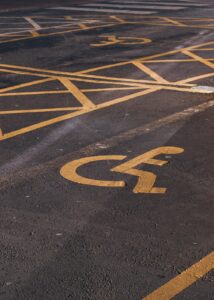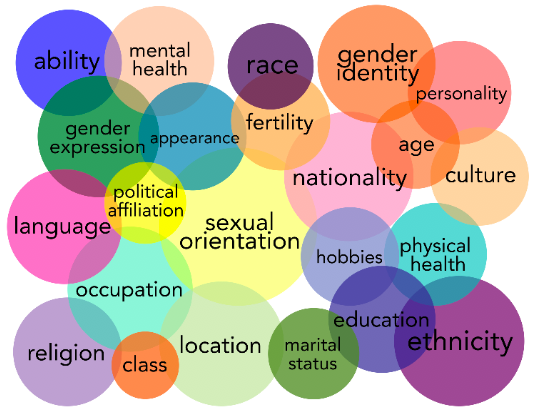Intersectionality and Disability Justice

Audre Lorde once said, “There is no such thing as a single-issue struggle because we do not live single-issue lives.” There is a lot to unpack within this quote. Lorde wrote this based on the lived experiences of black women within the United States, whose regular encounters dealt with race, gender, and class. Lorde outlines these never-ending issues in the life of women and oppressed people in the poem “The Black Unicorn”:
The black unicorn is greedy.
The black unicorn is impatient.
The black unicorn was mistaken
for a shadow
or symbol
and taken
through a cold country
where mist painted mockeries
of my fury.
It is not on her lap where the horn rests
but deep in her moonpit
growing.
The black unicorn is restless
the black unicorn is unrelenting
the black unicorn is not
free.
This is a powerful poem that explores themes of identity, power, and resilience. Through the image of the black unicorn, Lorde creates a symbol of strength and transformation that speaks to the power of the marginalized and oppressed to assert their own identities and claim their own power. The language of the poem is symbolic yet perfectly outlines those who are struggling to persevere and rise above everything that is constantly tossed in their lives. Because of intersectionality, there is no single issue ever!
In her writings and advocacy, Lorde set the tone and foundation for folks to become aware of the complexities of those living on the margins. She was a trailblazer for those to follow her voice and legacy.
Keri Gray is yet another strong Black voice for this generation in the social justice movement—more specifically, disability justice. Before going into her advocacy work, let me introduce who Keri Gray is. Gray is a cancer survivor, entrepreneur, speaker, and facilitator. At eight years old Keri was diagnosed with bone cancer, and after treatment she began walking with a prosthetic limb and experiencing hearing loss. Gray’s life is the epitome of intersectionality: She is a woman, black, and physically disabled. Her work as an activist addresses the intersections between disabilities and African American communities.
Gray said,
I am a young-adult black woman, sitting in a chair. On my right leg is a prosthetic limb, and I am wearing a red romper with a black head wrap. Out of all the folks who have disabilities, over 20 percent of them are from the African American community. Across the different intersections, disability exists. So when we’re talking about the social justice movement, when we’re talking about political and social empowerment of our people, we have to know that our people are impacted by disability. I’m tired of seeing our people being killed. I’m tired of seeing our people being institutionalized and being systematically broken. In the United States, we have to think about how we ensure that our people are free and given access to opportunities and resources that they need instead of being detained in places that confine them.
Disability justice encourages us to see how society’s diverse systems of oppression reinforce each other and affect every member of the disability community. There is no justice without including folks with disabilities of all kinds in our struggle for equality. People living with disabilities experience inequality in all its forms. We need to recognize how this interconnects with the issues of social justice and follow the lead of the individuals at the center of the fight.
This issue is often overlooked, however, and those who are impacted feel the neglect in addition to the other injustices they are already experiencing. People of color with disabilities deserve to be acknowledged, heard, and ultimately be present. As Gray said, “We deserve to take up space. Whether at work, at school, or in our communities, we’re worthy of belonging.”
So, how do we navigate this work? Here are some points for dialogue:
- Recognize that all unique experiences of identity are valid. Especially those that involve multiple, overlapping oppressions.
- Do not shy away from recognizing that people experience the world differently based on their overlapping identity markers.
- Avoid using language that seeks to define people by a singular identity marker.
- Understand and realize that your experiences are not a baseline. Be open to listening to others’ points of view.
This graphic shows some possible overlapping identities of someone living within various margins:

The graphic points to areas of possible intersection to examine:
- What facets of your identity are represented in this graphic?
- How do they intersect and impact how you move through the world?
- Are there facets of identity that are not included in this graphic? How might this speak to how parts of identity are overlooked or marginalized in your community or culture?
This work is imperative to achieving social justice goals. Disability is not just a question of medicine or health, nor is it just an issue of sensitivity and compassion. Rather, it must be seen as a question of politics and power(lessness), power over, and power to.
#DisabilityDemandsJustice
